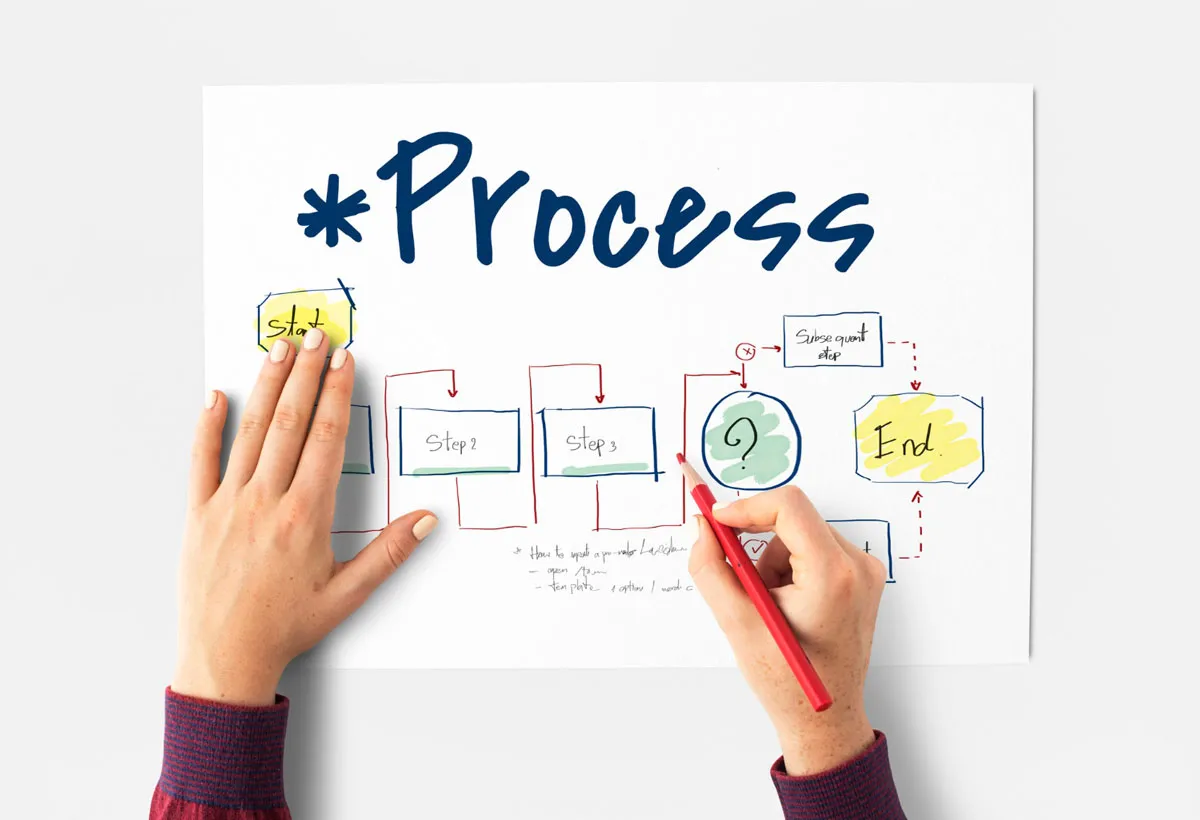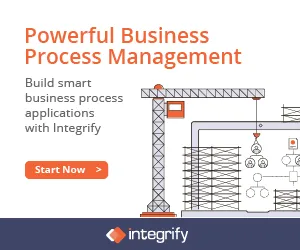Business Process Modeling for Organizational Success
Table of contents

The effectiveness of a company’s business process has a direct impact on its bottom line. Unfortunately, many organizations, large and small, lack an understanding of the functions that drive their business. That can lead to breakdowns that hinder an organization’s ability to grow and thrive. Business process modeling allows companies to gain an end-to-end view of the lifecycle of critical business functions.
What is Business Process Modeling?
Business process models are a visual representation of different organizational workflows and any underlying functions. They’re a subset of the business process management(opens in a new tab) discipline that covers the tools, and resources used to analyze, model, optimize, and monitor business processes.
By creating business models, business users gain a comprehensive view of essential business functions, represented by flowcharts and activity diagrams. In addition, business process models provide critical insights into the steps that make up a process and the procedures used to accomplish various tasks.
When you have a clear picture of a business process and its effects, you’re better positioned to help your organization target bottlenecks hindering its efficiency. By figuring out where the holdups are in the workflow, business users can come up with ways to get around those roadblocks and improve the effectiveness of the process.
Business Process Modeling Tools and Techniques
Business Process Modeling Notation (BPMN)
Business process modeling notation (BPMN) is a set of standardized symbols that outline different activities and interactions within a visual workflow. Unlike other methods of notation, BPMN is designed explicitly for process modeling. It’s a standardized format used by those who work as analysts, experts, and consultants in various industries.
UML Diagrams
Software developers commonly use universal Modeling Language (UML) diagrams to create object-oriented representations of the relationships between actors and systems. For example, users create use-case diagrams that go over different scenarios to which a business process might apply.
Flowcharts
Flowcharts are a simple way for users to create visual representations of business processes. They’re often the first step in creating more complex automation or refining current functions within a business workflow.
Gantt Charts
Business users rely on Gantt charts to break complex tasks down into smaller sub-tasks linked by certain dependencies. Each subtask must execute within a specific timeframe. Gantt charts are ideal for diagramming tasks that must get completed by a particular deadline to achieve optimal results. In addition, they’re easy to edit and help users see the effect different changes have on dependencies and timelines.
Importance of Business Process Modeling
If organizations want to stay viable in today’s business environment, they must try to evolve and grow to meet the needs of their industry. A company that stays the same faces the threat of extinction. For that reason, companies need the ability to rapidly adapt to changing business factors.
Without a strategy, your organization doesn’t stand much of a chance against other competitors in the same industry. The complexity of your infrastructure makes process modeling an indispensable tool. Think of how many applications your company employs daily to accomplish vital business tasks. The sheer number of platforms within a business can make things very chaotic and reduce your organization’s productivity.
Process modeling helps companies locate opportunities for improvement by breaking the current business process down and analyzing the supporting elements. That way, you understand whether your company is operating at optimal levels or if there’s room for improvement.
Business Process Modeling Best Practices

Business process models establish baselines for conducting activities within an organization. Having a good base makes it possible to figure out ways to improve upon established practices. You gain insights into how various functions impact your organization in different ways. Having that documentation makes it easier to redesign your processes to improve performance and productivity.
Set up your best practices for business modeling before you start your initiative. The following guidelines can help companies establish consistency when designing business process models.
Establish your framework
Start scoping out business processes within your organization and use the information you gather to establish a process library. It’s a hierarchy containing the names of all business processes discovered within your organization.
Break down business processes
Work on figuring out how to break down your business functions into the following components:
- Tasks — Provide more details into how each business process comes together
- Roles — Outlines who’s responsible for completing tasks
- Documents — Include any documents required to execute a process
- Applications — Covers applications needed to complete a business process
Limit Tasks
Minimize the number of tasks included in your process model. Including too many makes it hard to comprehend how your business processes work. Instead, try to break each one down into more digestible chunks of information that’s easier for people to understand.
Use appropriate names for tasks and events
Since tasks represent an action, name individual tasks using verbs that define their purpose within your process model. However, try not to make them so high-level that they become overly generic and unhelpful. A business process model example of how you might do that is to name a task “Tag computer assets” versus “Manage assets.”
Events that happen during a process affect the flow and typically trigger a specific result. Therefore, make sure you label all events in your business process model using a text description that’s 1-2 words long. For example, you might use “Sent” to indicate an email going out after successfully compiling a report for specific business users.
Importance of Process Modeling Software
Your business process modeling software choice is key to setting you on the right path to improving efficiency throughout your business processes. Nutrient Workflow’s business process modeling tools help you with mapping out the inner workings of your organization with ease. In addition, you can set up customizations suited to your company culture.
Interested in Automating Your Business Processes?
We have a variety of resources to help you on your journey to an automated workflow.
- Workflow Tools and eBooks
- Workflow Ideas Weekly eMail Newsletter(opens in a new tab)
- Recorded Demonstration of our Workflow Automation Software
- Request a Live Demonstration








